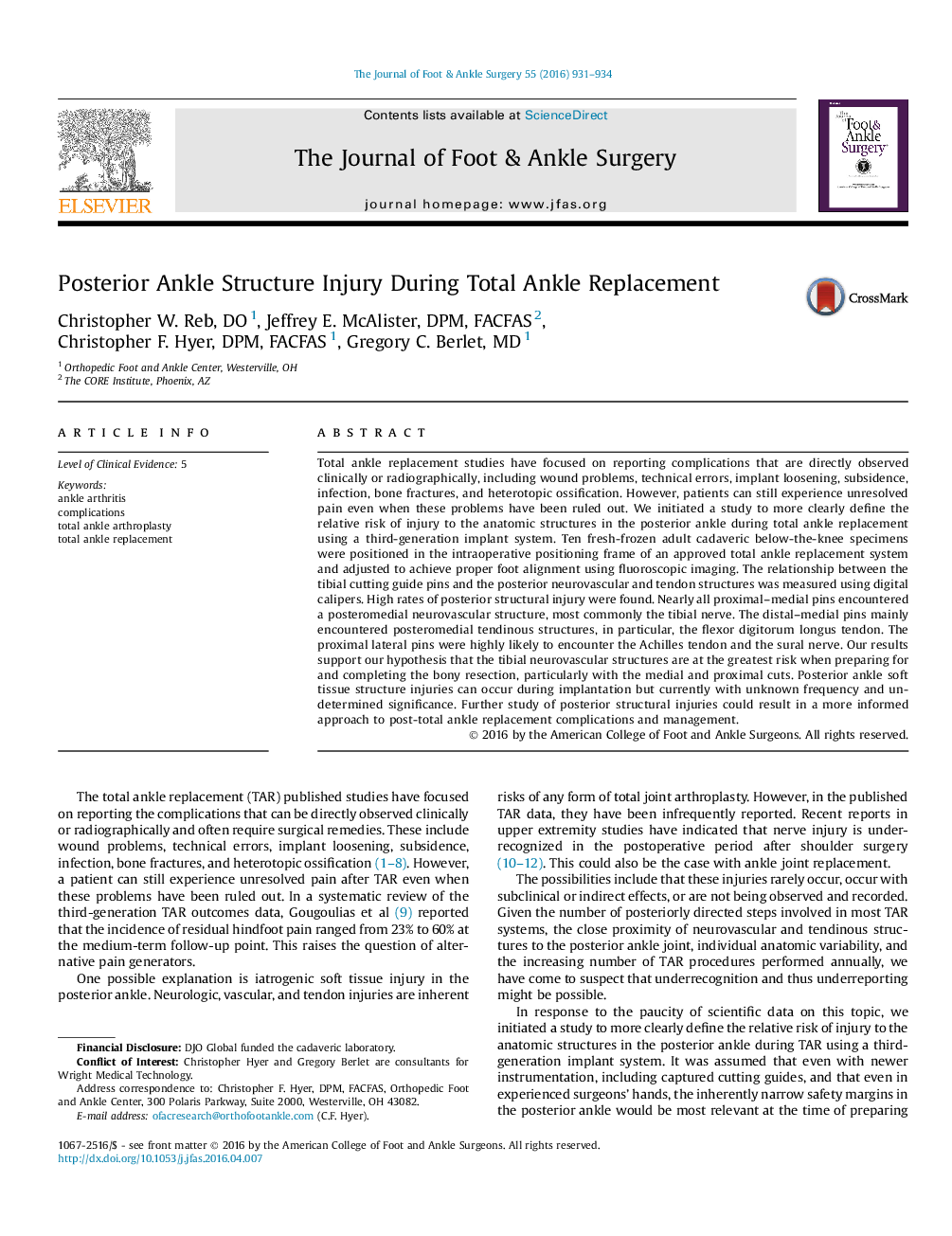| Article ID | Journal | Published Year | Pages | File Type |
|---|---|---|---|---|
| 2712727 | The Journal of Foot and Ankle Surgery | 2016 | 4 Pages |
Total ankle replacement studies have focused on reporting complications that are directly observed clinically or radiographically, including wound problems, technical errors, implant loosening, subsidence, infection, bone fractures, and heterotopic ossification. However, patients can still experience unresolved pain even when these problems have been ruled out. We initiated a study to more clearly define the relative risk of injury to the anatomic structures in the posterior ankle during total ankle replacement using a third-generation implant system. Ten fresh-frozen adult cadaveric below-the-knee specimens were positioned in the intraoperative positioning frame of an approved total ankle replacement system and adjusted to achieve proper foot alignment using fluoroscopic imaging. The relationship between the tibial cutting guide pins and the posterior neurovascular and tendon structures was measured using digital calipers. High rates of posterior structural injury were found. Nearly all proximal–medial pins encountered a posteromedial neurovascular structure, most commonly the tibial nerve. The distal–medial pins mainly encountered posteromedial tendinous structures, in particular, the flexor digitorum longus tendon. The proximal lateral pins were highly likely to encounter the Achilles tendon and the sural nerve. Our results support our hypothesis that the tibial neurovascular structures are at the greatest risk when preparing for and completing the bony resection, particularly with the medial and proximal cuts. Posterior ankle soft tissue structure injuries can occur during implantation but currently with unknown frequency and undetermined significance. Further study of posterior structural injuries could result in a more informed approach to post-total ankle replacement complications and management.
